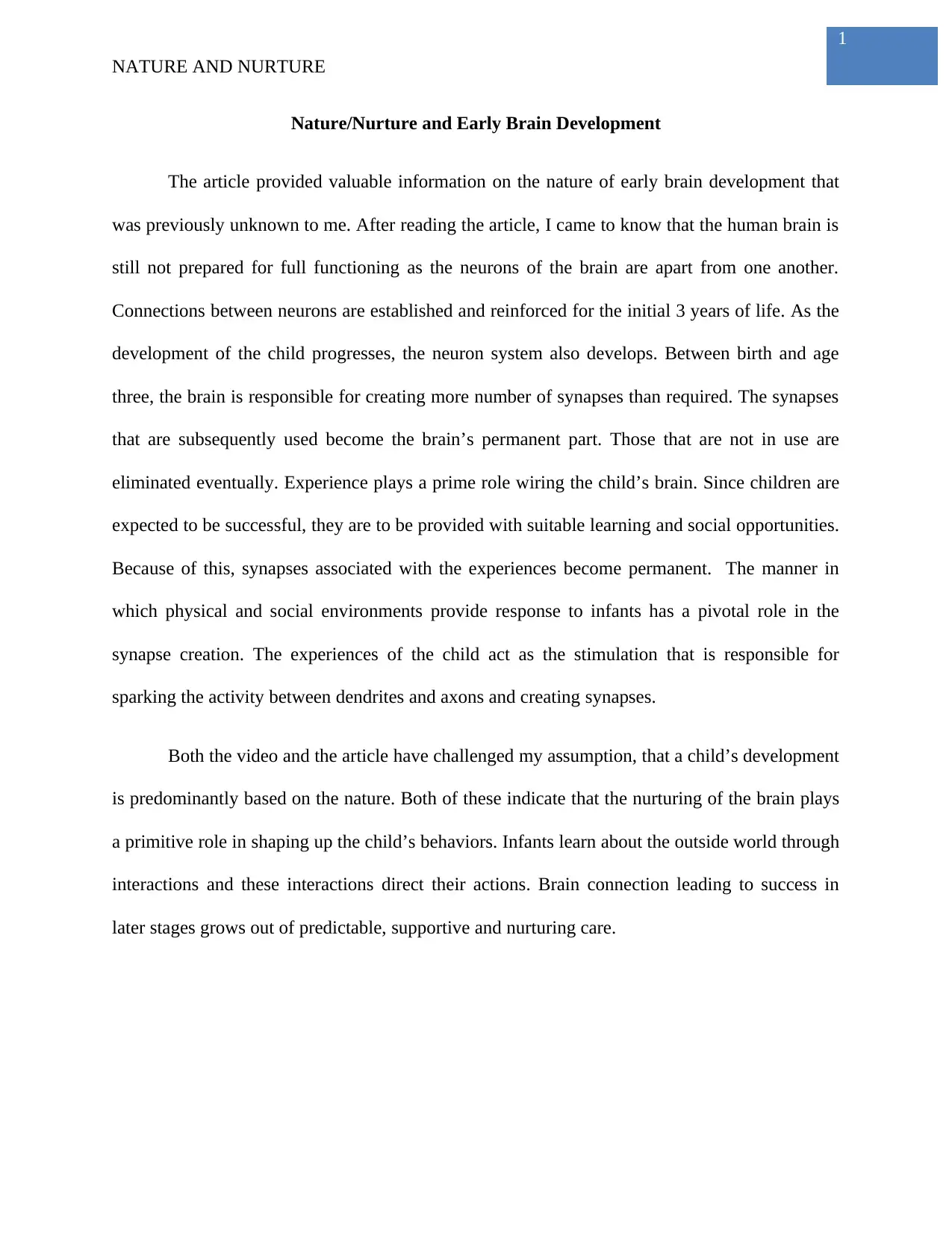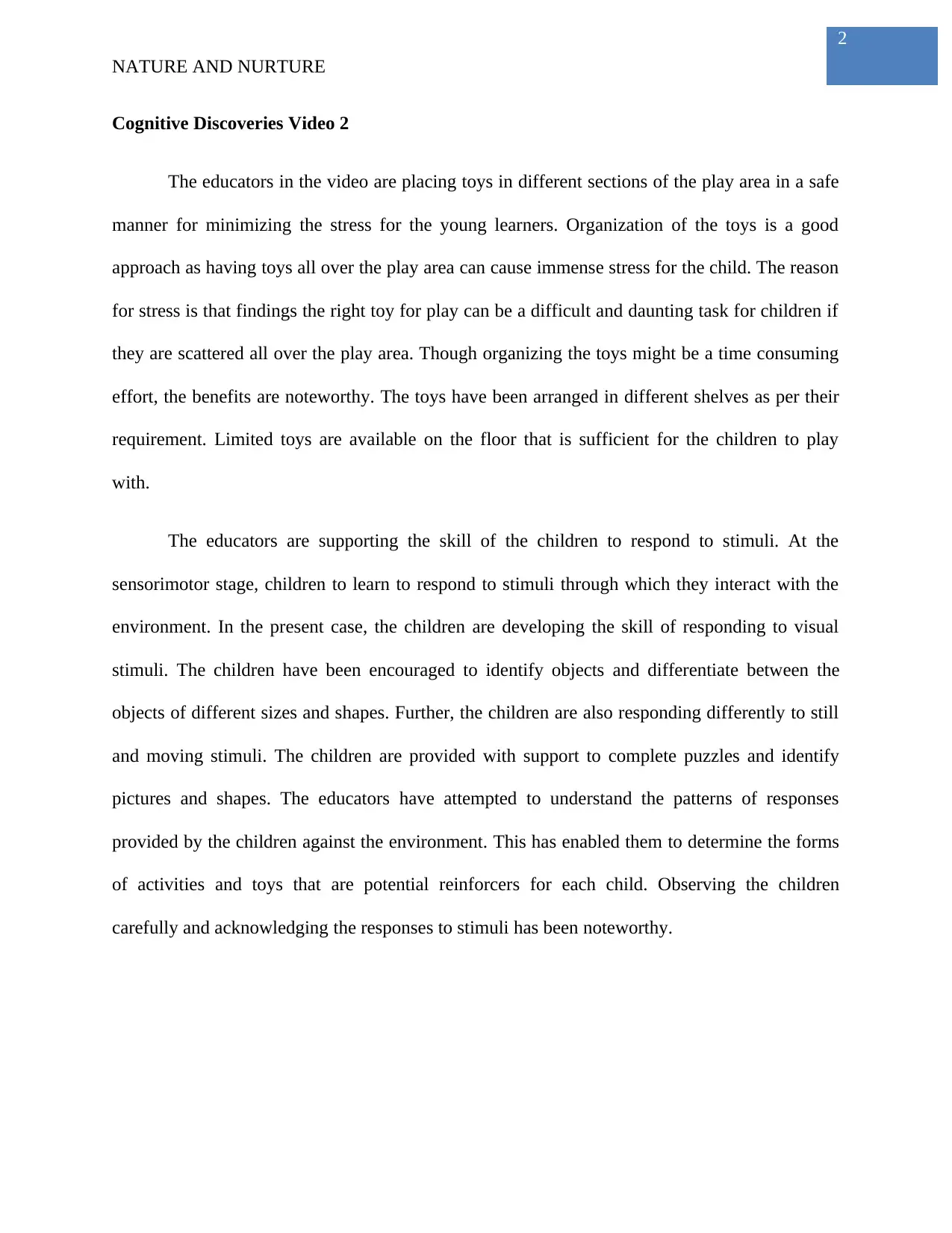Assignment: Nature vs Nurture and Early Brain Development Analysis
VerifiedAdded on 2021/04/17
|3
|602
|94
Homework Assignment
AI Summary
This assignment delves into the nature versus nurture debate in early brain development, drawing insights from an article and a video. The assignment explores how the brain's neural connections are shaped by experience during the first three years of life, emphasizing the importance of environmental stimuli and nurturing care. The analysis highlights how educators can foster cognitive development by creating supportive environments, organizing learning materials, and providing appropriate sensory stimuli. The student analyzes the impact of these factors on children's learning and behavior and discusses the implications of the findings for educational practices. The assignment emphasizes the importance of providing children with appropriate learning opportunities to encourage the development of synapses. The student also addresses the impact of toys and play areas on the children’s learning process.
1 out of 3









![[object Object]](/_next/static/media/star-bottom.7253800d.svg)